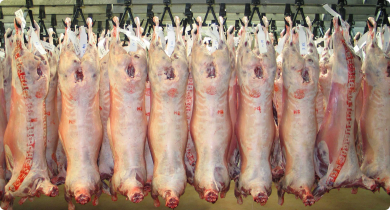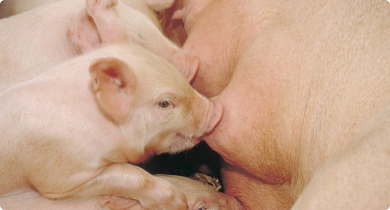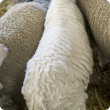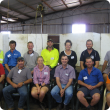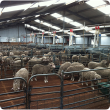Livestock species
The Department of Primary Industries and Regional Development supports the economic success of several livestock industries, in particular the beef, sheep, dairy and pork industries. There are just under 15 million sheep located primarily in the agricultural region, producing high quality meat and wool for world markets. The sheep meat market is worth $500 million, of which about half is for live exports with the remainder slaughtered locally, and a further $500 million comes from wool exports.
Of the two million head of beef cattle, approximately half are located in the south west (mainly for local slaughter) and the remainder in the north (mainly for live export). Total value of the beef industry is $517 million per year. The dairy industry, worth $140 million per year, is located in the high rainfall south west region and has internationally competitive production costs.
The pork industry is primarily located in the northern and central agricultural regions, with a total value of $130 million per year of which approximately 20% comes from exports to Singapore. The poultry industry has 8.5 million birds and is mainly focused on the domestic market for both eggs ($60 million) and chicken meat ($130 million).
Other livestock species that are farmed but make a relatively small contribution to the total value of the livestock industry include goats and alpacas.
Filter by search
Filter by topic
- (-) Remove Livestock research & development filter Livestock research & development
- Livestock management (21) Apply Livestock management filter
- Sheep (17) Apply Sheep filter
- Pastures (5) Apply Pastures filter
- Crops (5) Apply Crops filter
- Pasture management (3) Apply Pasture management filter
- Beef cattle (3) Apply Beef cattle filter
- Pasture species (2) Apply Pasture species filter
- Market development & access (1) Apply Market development & access filter
- Meat quality (1) Apply Meat quality filter
- Pigs (1) Apply Pigs filter
- Irrigated crops (1) Apply Irrigated crops filter
- Genetics & selection (1) Apply Genetics & selection filter
- Agricultural exports (1) Apply Agricultural exports filter
- Food, export & investment (1) Apply Food, export & investment filter
- Agribusiness Food & Trade (1) Apply Agribusiness Food & Trade filter

